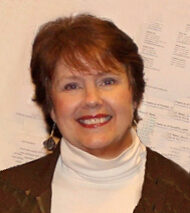
Nancy Huntting, Aesthetic Realism consultant, writes:
There’s no more difficult—or interesting—subject than the human self. What are its largest questions? What are its deepest hopes? What in the self of a person makes vibrant thought possible, and valuable expression, and happiness? And what in the self of everyone interferes with these? What in the human self makes for boredom—and for all evil, including racism? Vital, needed answers are in “The Self—Its Purpose & Its Mistake,” the new issue of The Right of Aesthetic Realism to Be Known.
The commentary by Ellen Reiss begins:
Dear Unknown Friends:
We are serializing the 1970 lecture The Renaissance Shows Self, by Eli Siegel. What is that thing, the self, which is so particular to each of us, so personal, so just our own—and which yet is fundamentally related to every self that has ever been? After all, that intimate term self, as in myself, is the same as that so inclusive noun in the phrase the human self.
Eli Siegel is the philosopher who understood the self. It is he who identified the central purpose of our intricate, subtle, insistent, often bewildered, hoping self. And he explained too what it is in our self which interferes with our largest purpose—interferes with our very life.
He showed that the self of everyone is an aesthetic situation, described in this principle: “All beauty is a making one of opposites, and the making one of opposites is what we are going after in ourselves.” For example, every self, whether child of 5 or professor emeritus, wants to be like a good melody: We want our power and our gentleness to be melodious—friendly to each other. We want to be excited and calm for the same purpose, as the melody is; and to have feeling which goes along with logic. We want to have—like that melody—continuity and change at once, stability and adventure.
The biggest opposites in everyone’s life, Mr. Siegel showed, are self and world. Whoever we are, the self which is our own is always in relation to the world outside of us. Our deepest purpose is to like that world, find meaning in it, and to feel that trying to be just to it is the same as taking care of ourselves. Meanwhile, in every life the desire to like reality has been in a fight with the desire to have contempt. Contempt is the “disposition in every person to think we will be for ourselves by making less of the outside world.” It has thousands of forms, from ordinary coldness and snobbishness to racism and exploiting people economically. It is, Mr. Siegel showed, the source of all injustice. And contempt—the looking down on, diminishing, feeling superior to what’s not us—is the greatest weakener-from-within of every self.
We Come to a Matter of Our Time
Last month the New York Times published an opinion piece with the title “There’s a Name for the Blah You’re Feeling: It’s Called Languishing.” Its author, psychologist Adam Grant, describes that “blah” state of mind as “a sense of stagnation and emptiness…as if you’re muddling through your days, looking at your life through a foggy windshield.” And he says that this “might be the dominant emotion of 2021.” He describes it further as a “dulling of delight,” “dwindling of drive,” an “indifference,” which “disrupts your ability to focus.” He indicates that he and people he knows and millions of Americans have, over the last year, developed this “chronic condition.” It is, he says, part of “the emotional long-haul of the pandemic.”
Mr. Grant is writing about a situation of self. And to understand it we need to see what Eli Siegel explains in the present lecture: “The self is an object that has an opinion about the world as object….This is the main thing in self.” The word languishing as Mr. Grant uses it is, I believe, a euphemism for a certain response of a self to the world, an opinion about the world. And it is important—in fact, it’s urgent—to ask this: is there a desire in self to find nothing interesting, to be unaffected, to make life dull? …Read more